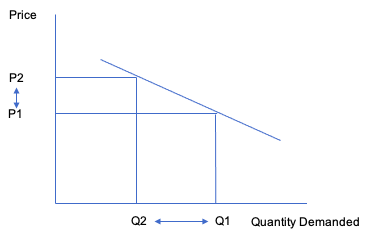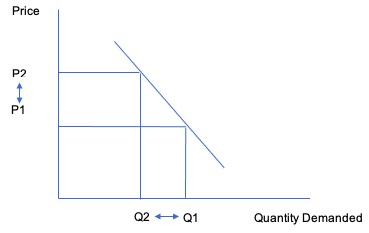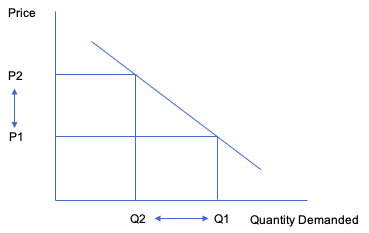Introduction
Price elasticity refers to “the percentage change in the quantity demanded caused by the price change” (Arnold, 2015, p. 505). This is a key concept in economics and is used by companies and business analysts to predict the impact of price changes on the quantity of products or services demanded or purchased by customers. It is not feasible for a company to continually increase the price of a product because of the inverse relationship between demand and price that implies that customers are likely to buy less of a product when its price increases. The demand for a product or service can be categorized as elastic, inelastic, and unitary elastic. These terms are explained in the following section.
Discussion
Elastic Demand
Elastic demand is created in a situation in which the percentage increase in the quantity demanded is higher than the percentage decrease in the price of a product or service. This implies that most consumers would stop buying a product or service when the supplier increases the price. The demand for a product or service is elastic when many substitutes or suppliers of the same product or service are available. Moreover, demand for luxury items is also elastic as their purchase represents a high proportion of individuals’ income. Therefore, demand is highly sensitive to changes in price. Furthermore, the demand for daily consumable products such as bread is also highly sensitive. This type of demand is graphically represented in Figure 1.

As the figure shows, a small price change causes a greater change in the demand for a product or service. Therefore, the coefficient of elasticity is more than one as ΔPx% is less than ΔQDx%.
Inelastic Demand
Inelastic demand is created when the demand for a product or service does not change correspondingly with an increase or decrease in the price. One example of inelastic demand is demand for gasoline as consumers will continue to purchase this product for their cars despite an increase in price. In this instance, the demand for gasoline will change only slightly due to the increase in its price. This situation is beneficial for suppliers as their revenue will increase because of the increase in the price despite any decrease in the quantity demanded. This type of demand is graphically represented in Figure 2.

The figure indicates that a large change in the price causes a smaller change in the demand for a product or service. Therefore, the coefficient of elasticity is less than one as ΔPx% is greater to ΔQDx%.
Unitary Demand
Unitary demand is created when the price change of a product or service causes no change in the quantity demanded or purchased. This means that suppliers cannot force a change in the demand for their products or services as consumers have to continue to make purchases under all circumstances. This implies that changes in price do not have an impact on the demand. Two examples of unitary demand include demand for utilities and medicines as people will likely still want to consume them irrespective of an increase in their prices. This means that the suppliers of such products or services make large profits because consumers will have to continue to purchase these to fulfill their needs or requirements. This type of demand is graphically represented in Figure 3.

The figure shows that a price change in this situation causes an equal change in the demand for a product or service. Therefore, the coefficient of elasticity is one as ΔPx% is equal to ΔQDx%.
Conclusion
Three types of demand elasticity have been demonstrated: elastic, inelastic, and unitary elasticities. These differ on the basis of the changes in the quantity demand caused by any changes in the prices of products or services.
Reference
Arnold, R. A. (2015). Economics (12th ed). Mason, OH: Cengage Learning.